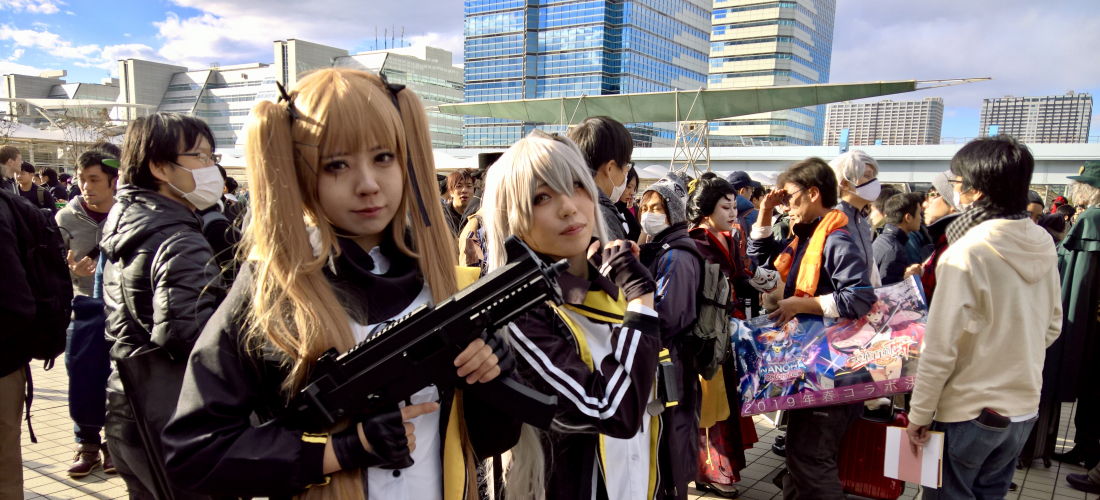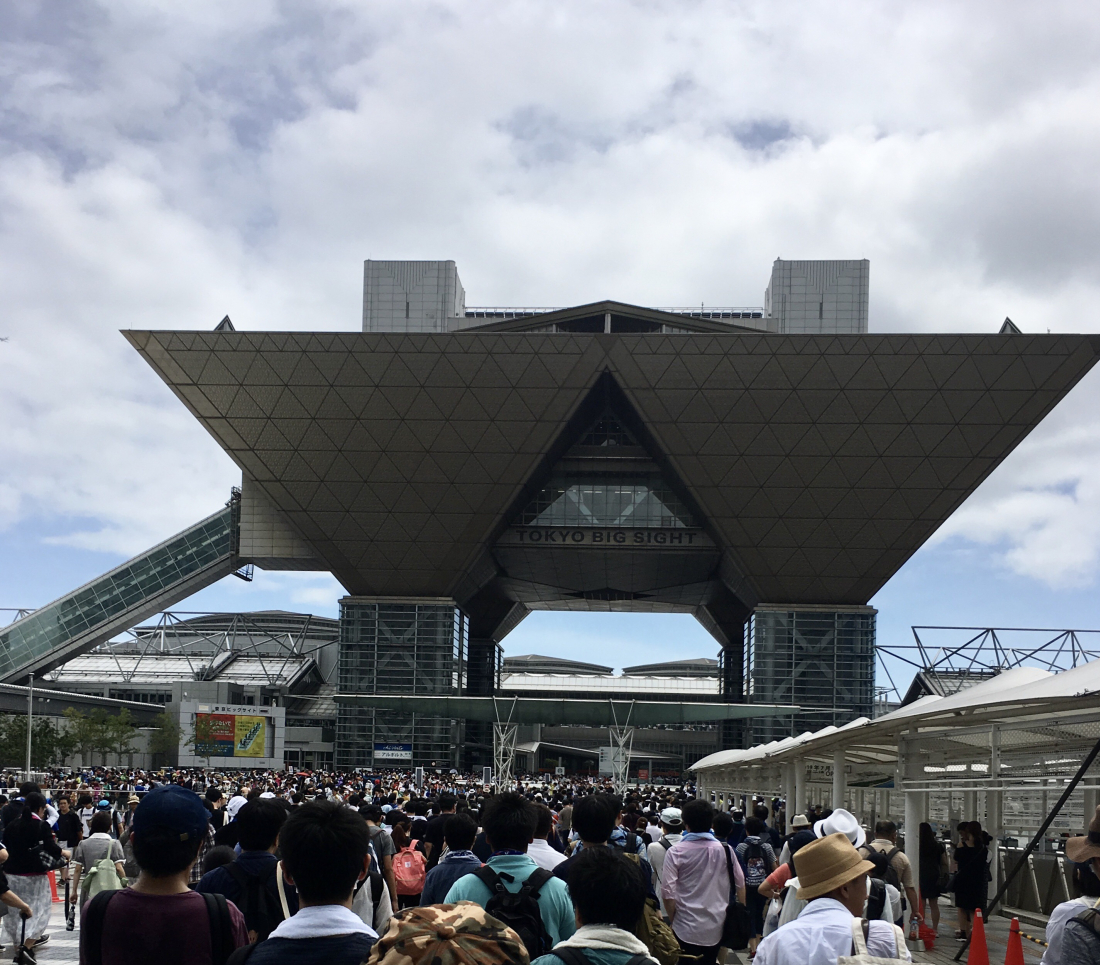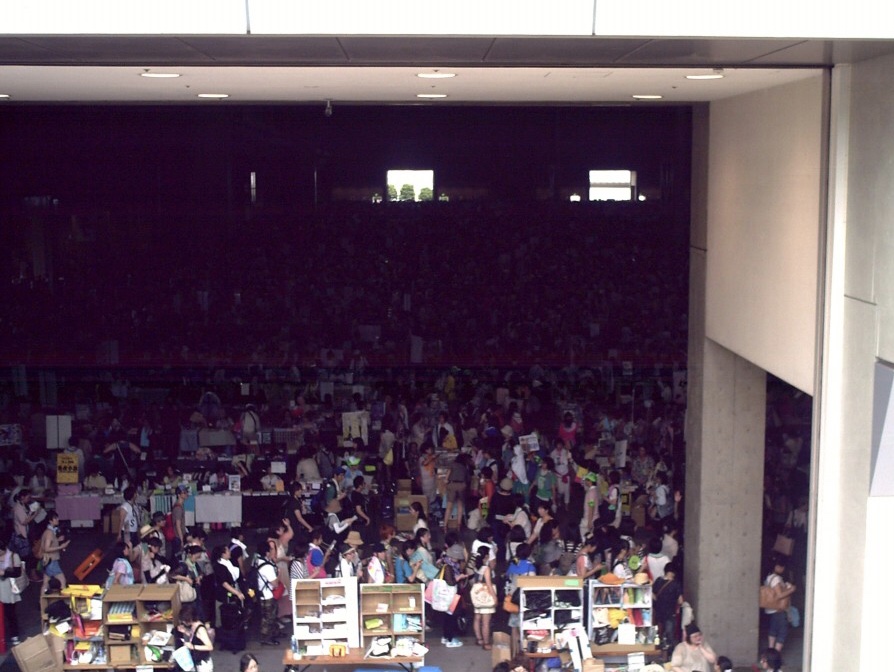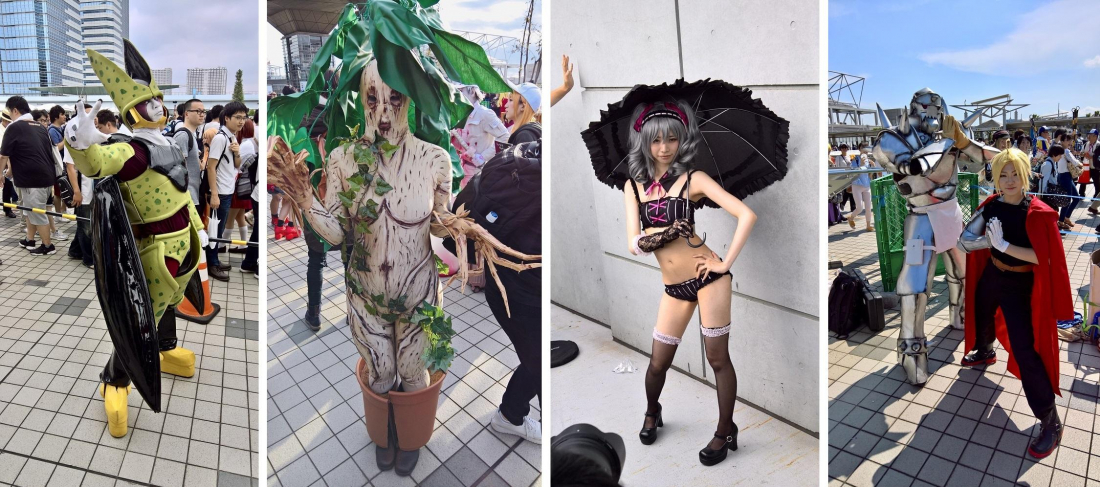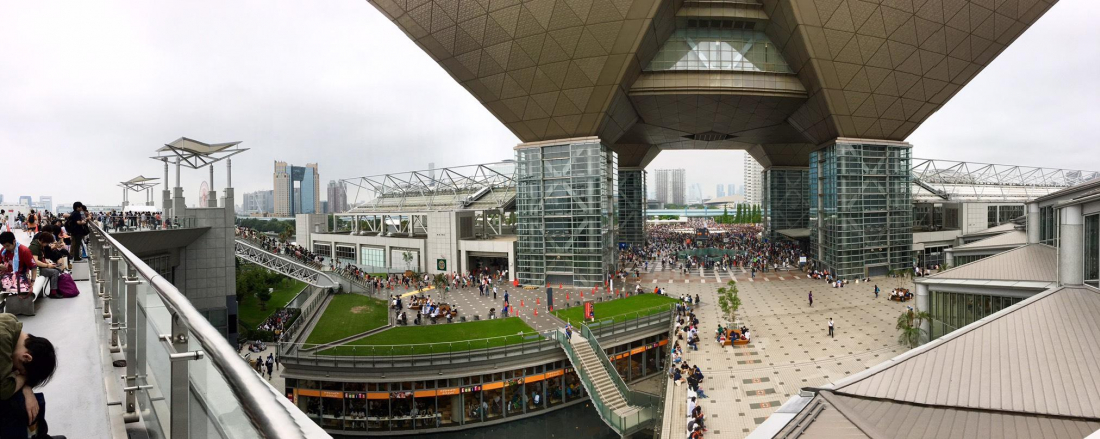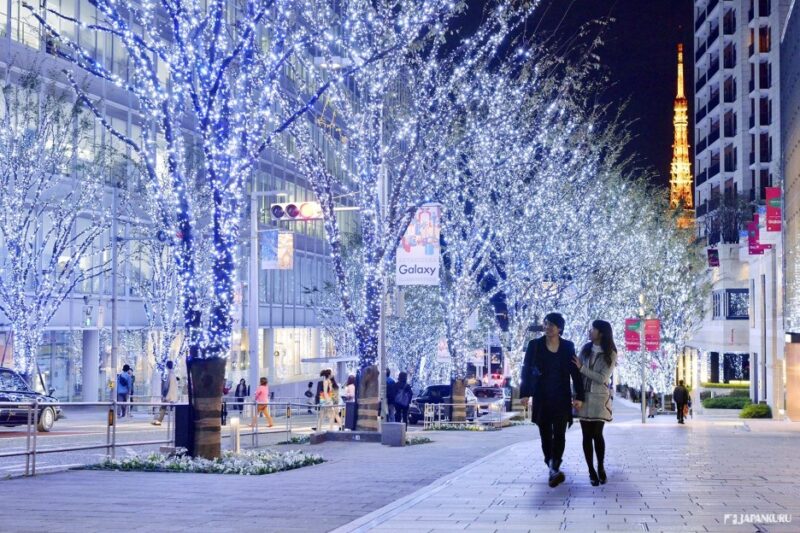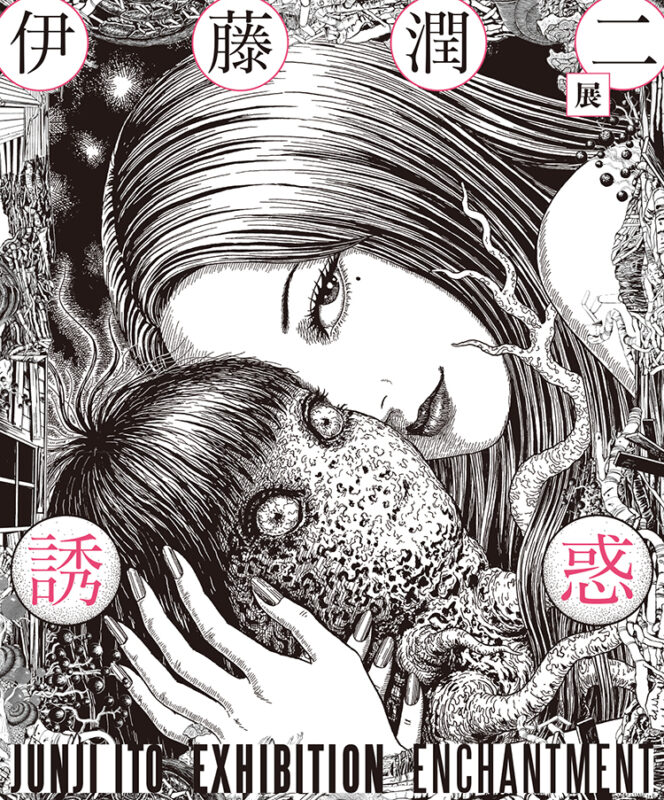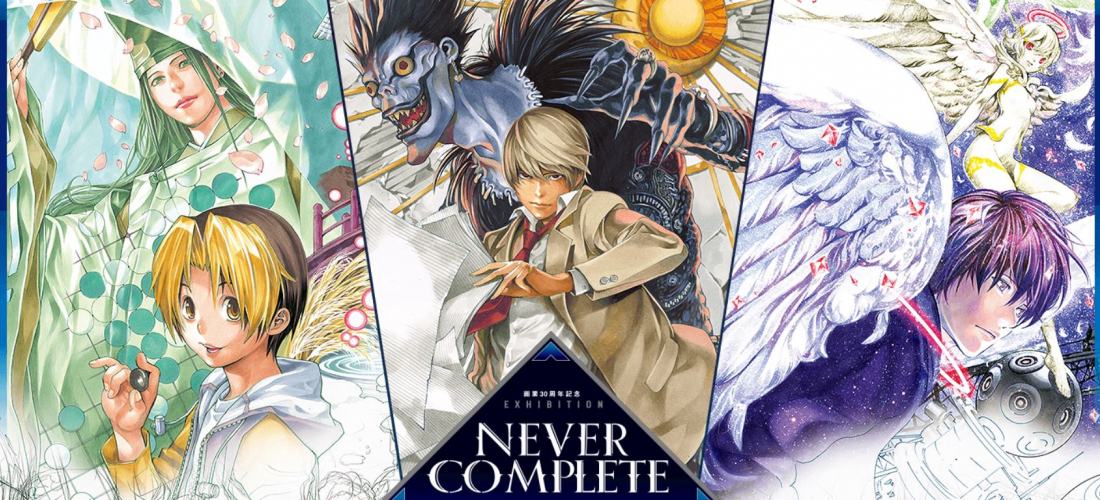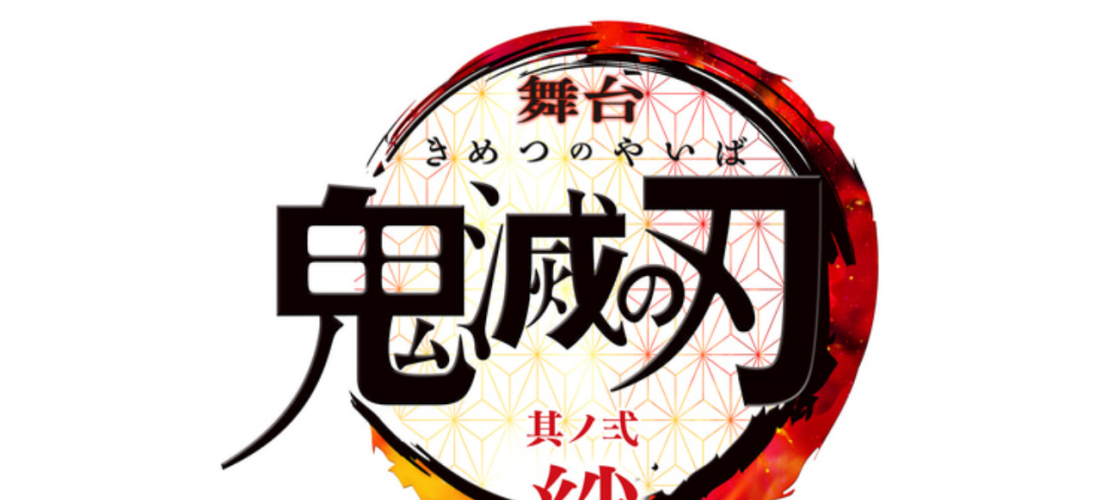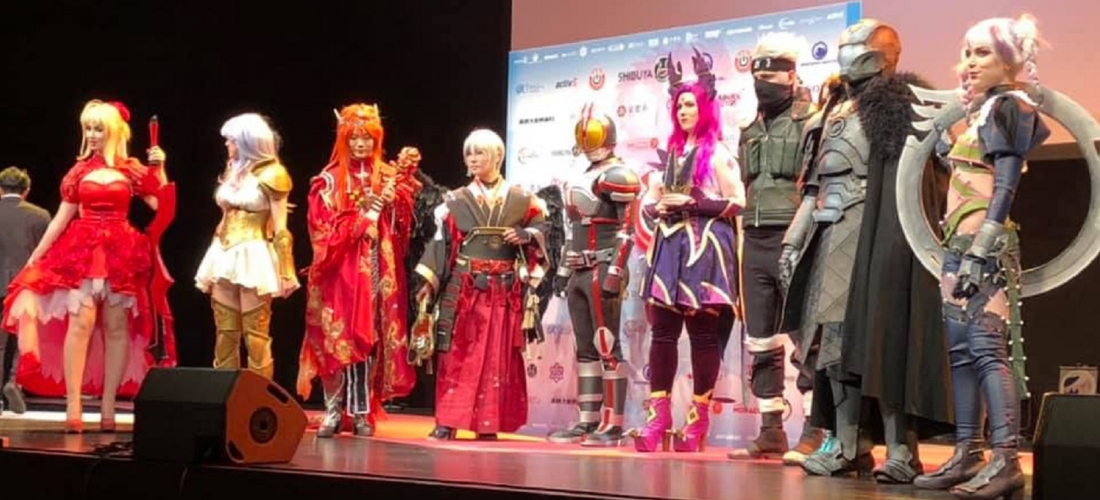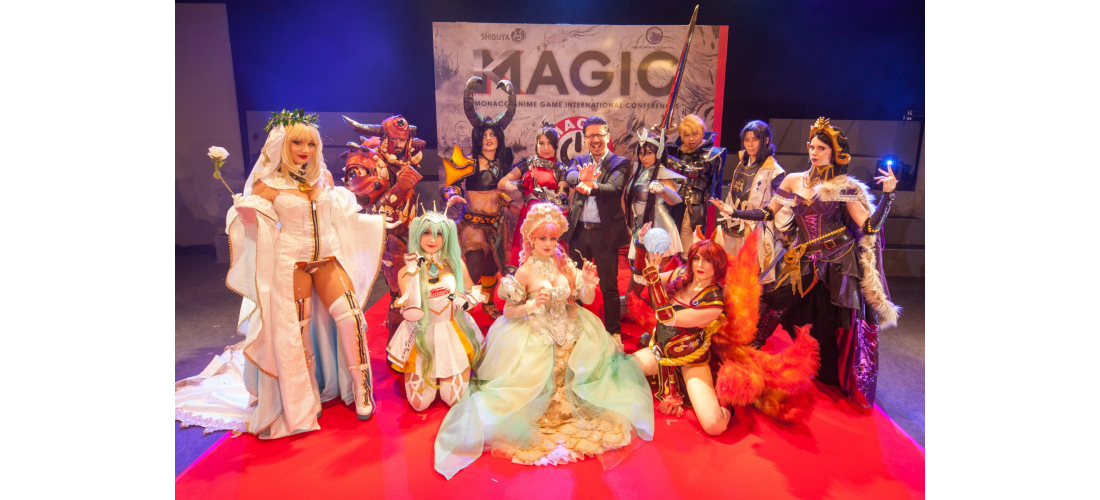CONTENTS
Comiket, AKA Comic Market, is one of Japan’s biggest events surrounding otaku culture – a twice-yearly (summer and winter) convention at Tokyo Big Sight featuring amateur doujinshi manga artists, big names in anime and video games, some of Japan’s most famous cosplayers, and crowds of adoring Japanese pop culture fans! Whether you’re gearing up and buying tickets for Comiket 99 (Winter 2020), or just want to know what Comic Market is all about, read on for all the info you crave.
What is Comiket? (Or is it Comic Market?)
✴ Comiket 98, Summer 2020 has unfortunately been canceled due to the spread of COVID-19 (coronavirus). Preparations for Comiket 99, Winter 2020, are still in progress. The December event may also be canceled, however, as organizers assess the situation closer to the date. For the most up-to-date information on cancelations, check the top of the page on the Japanese version of the Comiket website, found here. The English version is very rarely updated. ✴
Now one of Japan's biggest comic-related events, Comic Market (often nicknamed Comiket/コミケット or even Comike/コミケ) started with just a few hundred attendees in 1975. These days, the convention is a gathering place for doujinshi manga artists, cosplayers, major publishing companies, anime and game creators, and almost 600,000 Japanese pop culture lovers of all stripes, over a 4-day span.
Comiket is now a huge bi-annual event taking place every summer and winter at Tokyo Big Sight, a major Tokyo convention center. It's the biggest event of its kind in the world! You might hear about how intense an experience it can be, but if you're interested in seeing fan-created manga based around every theme you've ever dreamed of, booths from major companies featuring the latest in anime and video games, and Japan's most talented cosplayers, we can't help but recommend a visit! Just be prepared!
What You’ll Find at the Market
Comiket runs from 10:00 to 16:00 each day, and is broken up into three main areas: ① the biggest area and the one that started it all – the fan-made doujinshi halls, where "circles" (groups of creators) set up individual booths, ② an area exhibits from big companies in the manga, anime, and game industries, and ③ a place for cosplayers to show off their latest cosplay.
Fan-Made Comics (and Fan-Made Everything Else)
What are doujinshi (同人誌)? To put it simply, a doujinshi is any publication made by fans, a la fanzines. A fan-centered event, Comiket has been all about fan-made amateur manga from the start. Doujinshi can be based on another manga (many internet-users' first introduction to doujinshi might be stumbling upon steamy fanfiction featuring, say, Naruto and Sasuke), but doujinshi can also be created with totally original content.
Nowadays Comiket's doujinshi area contains hundreds and hundreds of booths selling things of all kinds, and taking up multiple halls of the Tokyo Big Sight convention center. While there is certainly plenty of fanfiction featuring characters from your favorite series (sexy in theme and otherwise), that's not all you'll find. The comics and pamphlets sold throughout the market include original content in manga genres of all kinds, and about everything from food and travel, to trains and bugs.
Make your way into just the right area and you might find a row of booths selling stationery, unique hand-made accessories, original music, indie board games, ball-jointed dolls, t-shirts (with designs both otaku-themed, and not), or just about anything else! While you can beeline for your favorite circles and creators, if you spend some time just wandering through the halls, you're bound to find areas devoted to fandoms you never even knew existed.
Corporate Booths
A look at the doujinshi area makes it clear why this event is called a comic market, but meandering through the area set aside for major companies gives you a glimpse of the major event Comiket has become. Booths surrounded by huge flashing screens, exhibits with eye-catching novelties (like these character-covered cars), and lines of people waiting to purchase limited-edition goods. If your ultimate goal is to see polished exhibits from Japan's biggest manga and anime publishers and video game creators, there are other conventions throughout the year that might be your best bet, but the setups at Comiket are nothing to scoff at.
Cosplay
The cosplayers of Comiket, dressed in mech suits, skimpy magical girl dresses, fantasy kimono, unique original designs, and everything in between, gather in a roped-off area in the outdoor courtyard area of Tokyo Big Sight. It's pretty fun seeing Edward Elric, Naruto, Madoka, and a thousand other characters who look vaguely familiar or completely new, all in one area! In an effort to keep things organized and minimize complaints from locals, Comiket asks cosplayers to arrive at the event in normal clothing, get dressed in the designated changing rooms, show off their cosplay and take pictures in the designated space, and then change back before returning home. It's all a very Japanese feat of cooperation, which is why so many of Japan's best cosplayers successfully gather at the event twice every year.
Of course, you can join in too! If you want to cosplay at Comiket, make sure you register when you head to the changing room (the fee is 1,000 yen) and then follow the rules (like avoiding large accessories that might accidentally hurt others, not wearing costumes that look like real uniformed officers, and using the changing rooms between 10:00 and 15:30!). If you just want to admire the gorgeous costumes and take pictures, make sure to be polite and stick to the standard etiquette: ask permission before taking any snapshots, get in line if you want to take photos of a popular cosplayer, and don't try to take any pictures they're not comfortable with! A simple "shashin o totte mo ii desu ka?" (写真を撮ってもいいですか?May I take a picture?) will go a long way.
How to Get Ready, and Get to Comiket
Access
Things get crazy once you arrive at Tokyo Big Sight for Comiket, but getting there is easy!
The closes stations are Kokusai-Tenjijo Station on the Rinkai Line (about 7 minutes walk) and Tokyo Big Sight Station on the Yurikamome Line (about 3 minutes walk). Tokyo Big Sight, where Comiket takes place, is in the Odaiba area of Tokyo. It's a little removed from the parts of Tokyo where most travelers stay, but you can probably make it over with just one transfer.
Some popular routes:
① Asakusa Station ⇒ (Asakusa Line) ⇒ Shimbashi Station ⇒ (Yurikamome Line) ⇒ Tokyo Big Sight Station
② Tokyo Station ⇒ (Yamanote Line) ⇒ Shimbashi Station ⇒ (Yurikamome Line) ⇒ Tokyo Big Sight Station
③ Shinjuku/Shibuya/Harajuku/Ikebukuro Stations ⇒ (Yamanote Line) ⇒ Osaki Station ⇒ (Rinkai Line) ⇒ Kokusai Tenjijo Station
How & What to Prepare
Step 1: Pick up a catalog if you're in Japan, or check the one online, here.
This catalog only comes in Japanese, but if you're a fan on a mission, you'll want to use it to the best of your ability. It comes in hard copies which you can pick up from manga shops around Japan (they throw a list up on the website ahead of time), or a web edition that you can access by just registering for free. The contents include a guide to every single circle (group of creators) that will be present at the market, and floor maps to help you find them. If you know what you're looking for, check ahead of time!
Step 2: Get your wristband (buy a Comiket ticket).
Most Comiket pros will buy their Comiket tickets (they come as wristbands) in advance, along with the catalog, when you can get a whole 4-day bundle ticket for 2,750 yen, or single-day tickets for 550 yen. If you don't buy a ticket until the day-of, you can get them for 1,000 yen at Tokyo Big Sight each day, but we wouldn't advise it. Lines get long, and you wouldn't want to miss out on precious shopping time waiting to even enter! On the other hand, since crowds tend to peak in the morning, if you decide to drop in to see what's going on in the middle of the afternoon, you might not even be checked for a wristband.
Step 3: Decide which day or days are right for you.
Did you know that the booths and circles present vary by day? The four days of Comiket generally offer different types of creators, so check the catalog and figure out which days look most like what you're interested in. Make sure you don't miss what you want to see most!
Step 4: Bring the right things.
Are you going to Winter Comiket or Summer Comiket? This is actually pretty important, because you're likely to spend some time waiting outside before you make it into the convention halls. Don't freeze to death in winter, but even more importantly, don't be one of the many people who faint with heatstroke and dehydration every summer!! If it's hot outside, it'll be hot in line and still pretty warm inside the building. Bring water, a towel to dry your sweaty face off (yes really), and a portable fan if you can! There are food court areas, vending machines, and convenience stores on the grounds, so you can buy drinks if you run out, but it's easiest to bring your own to stay hydrated.
If you're planning on buying lots of manga, bring plenty of cash in small bills, and something to carry the day's haul! Not all sellers provide bags, and many of them only accept cash.
Step 5: Figure out when to arrive.
Again – think about why you're going. If you just want to appreciate the novelty of the huge event, you can show up later in the day. If there's something in particular you want to buy, especially a popular limited-edition something, get there early. Take the first train if you can. Lines get long, and things sell out fast!
In the end, if you get to Comiket and end up lost and confused, don't worry! There are tables of volunteers set up throughout the halls of the convention center, and these days you'll even find English-speaking volunteers, there to help you find your way!
Finally, Don’t Forget to Enjoy Yourself!
With a little bit of forethought and preparation, a day full of fun at Comiket flies by in the blink of an eye! It's an event that starts early in the morning for many, which means it also tends to finish up early in the afternoon. There's so much to see, buy, and take pictures of – before you know it the sun will be low in the sky, and the crowds will be rolling in waves towards the trains heading home.
Not visiting Japan during the right times of year for Comiket? Looking for something anime and manga related that's a little different?
・The Ghibli Museum is open year-round – just make sure you buy tickets ahead of time!
・Anime Japan is another huge Japanese anime convention, but it's more focused on bigger companies.
If you make it to Comiket, or any of these events, we want to hear all about it! Let us know about your experience on twitter, instagram, and facebook!
Details
NAME:Comic Market
MAP
ACCESS:Tokyo Big Sight Station / Kokusai-Tenjijo Station
COMMENT
FEATURED MEDIA
VIEW MORE 
A New Tokyo Animal Destination: Relax & Learn About the World’s Animals in Japan
#pr #japankuru #anitouch #anitouchtokyodome #capybara #capybaracafe #animalcafe #tokyotrip #japantrip #카피바라 #애니터치 #아이와가볼만한곳 #도쿄여행 #가족여행 #東京旅遊 #東京親子景點 #日本動物互動體驗 #水豚泡澡 #東京巨蛋城 #เที่ยวญี่ปุ่น2025 #ที่เที่ยวครอบครัว #สวนสัตว์ในร่ม #TokyoDomeCity #anitouchtokyodome

Shohei Ohtani Collab Developed Products & Other Japanese Drugstore Recommendations From Kowa
#pr #japankuru
#kowa #syncronkowa #japanshopping #preworkout #postworkout #tokyoshopping #japantrip #일본쇼핑 #일본이온음료 #오타니 #오타니쇼헤이 #코와 #興和 #日本必買 #日本旅遊 #運動補充能量 #運動飲品 #ช้อปปิ้งญี่ปุ่น #เครื่องดื่มออกกำลังกาย #นักกีฬา #ผลิตภัณฑ์ญี่ปุ่น #อาหารเสริมญี่ปุ่น

도쿄 근교 당일치기 여행 추천! 작은 에도라 불리는 ‘가와고에’
세이부 ‘가와고에 패스(디지털)’ 하나면 편리하게 이동 + 가성비까지 완벽하게! 필름카메라 감성 가득한 레트로 거리 길거리 먹방부터 귀여움 끝판왕 핫플&포토 스폿까지 총집합!
Looking for day trips from Tokyo? Try Kawagoe, AKA Little Edo!
Use the SEIBU KAWAGOE PASS (Digital) for easy, affordable transportation!
Check out the historic streets of Kawagoe for some great street food and plenty of picturesque retro photo ops.
#pr #japankuru #도쿄근교여행 #가와고에 #가와고에패스 #세이부패스 #기모노체험 #가와고에여행 #도쿄여행코스 #도쿄근교당일치기 #세이부가와고에패스
#tokyotrip #kawagoe #tokyodaytrip #seibukawagoepass #kimono #japantrip

Hirakata Park, Osaka: Enjoy the Classic Japanese Theme Park Experience!
#pr #japankuru #hirakatapark #amusementpark #japantrip #osakatrip #familytrip #rollercoaster #retrôvibes #枚方公園 #大阪旅遊 #關西私房景點 #日本親子旅行 #日本遊樂園 #木造雲霄飛車 #히라카타파크 #สวนสนุกฮิราคาตะพาร์ค

🍵Love Matcha? Upgrade Your Matcha Experience With Tsujiri!
・160년 전통 일본 말차 브랜드 츠지리에서 말차 덕후들이 픽한 인기템만 골라봤어요
・抹茶控的天堂!甜點、餅乾、飲品一次滿足,連伴手禮都幫你列好清單了
・ส่องมัทฉะสุดฮิต พร้อมพาเที่ยวร้านดังในอุจิ เกียวโต
#pr #japankuru #matcha #matchalover #uji #kyoto #japantrip #ujimatcha #matchalatte #matchasweets #tsujiri #말차 #말차덕후 #츠지리 #교토여행 #말차라떼 #辻利抹茶 #抹茶控 #日本抹茶 #宇治 #宇治抹茶 #日本伴手禮 #抹茶拿鐵 #抹茶甜點 #มัทฉะ #ของฝากญี่ปุ่น #ชาเขียวญี่ปุ่น #ซึจิริ #เกียวโต

・What Is Nenaito? And How Does This Sleep Care Supplement Work?
・你的睡眠保健品——認識「睡眠茶氨酸錠」
・수면 케어 서플리먼트 ‘네나이토’란?
・ผลิตภัณฑ์เสริมอาหารดูแลการนอน “Nenaito(ネナイト)” คืออะไร?
#pr #japankuru #sleepcare #japanshopping #nenaito #sleepsupplement #asahi #睡眠茶氨酸錠 #睡眠保健 #朝日 #l茶胺酸 #日本藥妝 #日本必買 #일본쇼핑 #수면 #건강하자 #네나이토 #일본영양제 #อาหารเสริมญี่ปุ่น #ช้อปปิ้งญี่ปุ่น #ร้านขายยาญี่ปุ่น #ดูแลตัวเองก่อนนอน #อาซาฮิ

Japanese Drugstore Must-Buys! Essential Items from Hisamitsu® Pharmaceutical
#PR #japankuru #hisamitsu #salonpas #feitas #hisamitsupharmaceutical #japanshopping #tokyoshopping #traveltips #japanhaul #japantrip #japantravel

Whether you grew up with Dragon Ball or you just fell in love with Dragon Ball DAIMA, you'll like the newest JINS collab. Shop this limited-edition Dragon Ball accessory collection to find some of the best Dragon Ball merchandise in Japan!
>> Find out more at Japankuru.com! (link in bio)
#japankuru #dragonball #dragonballdaima #animecollab #japanshopping #jins #japaneseglasses #japantravel #animemerch #pr

This month, Japankuru teamed up with @official_korekoko to invite three influencers (originally from Thailand, China, and Taiwan) on a trip to Yokohama. Check out the article (in Chinese) on Japankuru.com for all of their travel tips and photography hints - and look forward to more cool collaborations coming soon!
【橫濱夜散策 x 教你怎麼拍出網美照 📸✨】
每次來日本玩,是不是都會先找旅日網紅的推薦清單?
這次,我們邀請擁有日本豐富旅遊經驗的🇹🇭泰國、🇨🇳中國、🇹🇼台灣網紅,帶你走進夜晚的橫濱!從玩樂路線到拍照技巧,教你怎麼拍出最美的夜景照。那些熟悉的景點,換個視角說不定會有新發現~快跟他們一起出發吧!
#japankuru #橫濱紅磚倉庫 #汽車道 #中華街 #yokohama #japankuru #橫濱紅磚倉庫 #汽車道 #中華街 #yokohama #yokohamaredbrickwarehouse #yokohamachinatown

If you’re a fan of Vivienne Westwood's Japanese designs, and you’re looking forward to shopping in Harajuku this summer, we’ve got important news for you. Vivienne Westwood RED LABEL Laforet Harajuku is now closed for renovations - but the grand reopening is scheduled for July!
>> Find out more at Japankuru.com! (link in bio)
#japankuru #viviennewestwood #harajuku #omotesando #viviennewestwoodredlabel #viviennewestwoodjapan #비비안웨스트우드 #오모테산도 #하라주쿠 #日本購物 #薇薇安魏斯伍德 #日本時尚 #原宿 #表參道 #japantrip #japanshopping #pr

Ready to see TeamLab in Kyoto!? At TeamLab Biovortex Kyoto, the collective is taking their acclaimed immersive art and bringing it to Japan's ancient capital. We can't wait to see it for ourselves this autumn!
>> Find out more at Japankuru.com! (link in bio)
#japankuru #teamlab #teamlabbiovortex #kyoto #kyototrip #japantravel #artnews
Photos courtesy of teamLab, Exhibition view of teamLab Biovortex Kyoto, 2025, Kyoto ® teamLab, courtesy Pace Gallery

Japanese Makeup Shopping • A Trip to Kamakura & Enoshima With Canmake’s Cool-Toned Summer Makeup
#pr #canmake #enoshima #enoden #에노시마 #캔메이크 #japanesemakeup #japanesecosmetics

⚔️The Robot Restaurant is gone, but the Samurai Restaurant is here to take its place. Check it out, and don't forget your coupon!
🍣신주쿠의 명소 로봇 레스토랑이 사무라이 레스토랑으로 부활! 절찬 쿠폰 발급중
💃18歲以上才能入場的歌舞秀,和你想的不一樣!拿好優惠券去看看~
#tokyo #shinjuku #samurairestaurant #robotrestaurant #tokyotrip #도쿄여행 #신주쿠 #사무라이레스토랑 #이색체험 #할인이벤트 #歌舞伎町 #東京景點 #武士餐廳 #日本表演 #日本文化體驗 #japankuru #japantrip #japantravel #japanlovers #japan_of_insta

Japanese appliance & electronics shopping with our KOJIMA x BicCamera coupon!
用JAPANKURU的KOJIMA x BicCamera優惠券買這些正好❤️
코지마 x 빅 카메라 쿠폰으로 일본 가전 제품 쇼핑하기
#pr #japankuru #japanshopping #kojima #biccamera #japaneseskincare #yaman #dji #osmopocket3 #skincaredevice #日本購物 #美容儀 #相機 #雅萌 #日本家電 #일본여행 #면세 #여행꿀팁 #일본쇼핑리스트 #쿠폰 #일본쇼핑 #일본브랜드 #할인 #코지마 #빅카메라 #japankurucoupon

